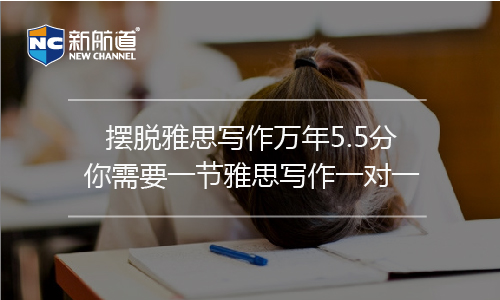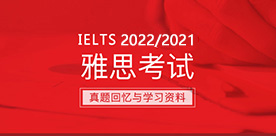雅思阅读真题题库之Gifted children and learning原文+题目
2017/6/17 14:17:52来源:新航道作者:新航道
摘要:上海新航道培训学校小编给考生们带来了雅思阅读真题题库之Gifted children and learning原文+题目,希望备考雅思考试的同学们一定要认真的看题、做题,多研究积累才能实现自我提升,预祝各位考生都取得理想的成绩。
上海新航道培训学校小编给考生们带来了雅思阅读真题题库之Gifted children and learning原文+题目,希望备考雅思考试的同学们一定要认真的看题、做题,多研究积累才能实现自我提升,预祝各位考生都取得理想的成绩。
Gifted children and learning
Internationally, ‘giftedness’ is most frequently determined by a score on a general intelligence test, known as an IQ test, which is above a chosen cutoff point, usually at around the top 2-5%. Children’s educational environment contributes to the IQ score and the way intelligence is used. For example, a very close positive relationship was found when children’s IQ scores were compared with their home educational provision (Freeman, 2010). The higher the children’s IQ scores, especially over IQ 130, the better the quality of their educational backup, measured in terms of reported verbal interactions with parents, number of books and activities in their home etc. Because IQ tests are decidedly influenced by what the child has learned, they are to some extent measures of current achievement based on age-norms; that is, how well the children have learned to manipulate their knowledge and know-how within the terms of the test. The vocabulary aspect, for example, is dependent on having heard those words. But IQ tests can neither identify the processes of learning and thinking nor predict creativity.
Excellence does not emerge without appropriate help. To reach an exceptionally high standard in any area very able children need the means to learn, which includes material to work with and focused challenging tuition — and the encouragement to follow their dream. There appears to be a qualitative difference in the way the intellectually highly able think, compared with more average-ability or older pupils, for whom external regulation by the teacher often compensates for lack of internal regulation. To be at their most effective in their self-regulation, all children can be helped to identify their own ways of learning — metacognition — which will include strategies of planning, monitoring, evaluation, and choice of what to learn. Emotional awareness is also part of metacognition, so children should be helped to be aware of their feelings around the area to be learned, feelings of curiosity or confidence, for example.
High achievers have been found to use self-regulatory learning strategies more often and more effectively than lower achievers, and are better able to transfer these strategies to deal with unfamiliar tasks. This happens to such a high degree in some children that they appear to be demonstrating talent in particular areas. Overviewing research on the thinking process of highly able children, (Shore and Kanevsky, 1993) put the instructor’s problem succinctly: ‘If they [the gifted] merely think more quickly, then we need only teach more quickly. If they merely make fewer errors, then we can shorten the practice’. But of course, this is not entirely the case; adjustments have to be made in methods of learning and teaching, to take account of the many ways individuals think.
Yet in order to learn by themselves, the gifted do need some support from their teachers. Conversely, teachers who have a tendency to ‘overdirect’ can diminish their gifted pupils’ learning autonomy. Although ‘spoon-feeding’ can produce extremely high examination results, these are not always followed by equally impressive life successes. Too much dependence on the teachers risks loss of autonomy and motivation to discover. However, when teachers help pupils to reflect on their own learning and thinking activities, they increase their pupils’ self-regulation. For a young child, it may be just the simple question ‘What have you learned today?’ which helps them to recognise what they are doing. Given that a fundamental goal of education is to transfer the control of learning from teachers to pupils, improving pupils’ learning to learn techniques should be a major outcome of the school experience, especially for the highly competent. There are quite a number of new methods which can help, such as child-initiated learning, ability-peer tutoring, etc. Such practices have been found to be particularly useful for bright children from deprived areas.
But scientific progress is not all theoretical, knowledge is a so vital to outstanding performance: individuals who know a great deal about a specific domain will achieve at a higher level than those who do not (Elshout, 1995). Research with creative scientists by Simonton (1988) brought him to the conclusion that above a certain high level, characteristics such as independence seemed to contribute more to reaching the highest levels of expertise than intellectual skills, due to the great demands of effort and time needed for learning and practice. Creativity in all forms can be seen as expertise mixed with a high level of motivation (Weisberg, 1993).
To sum up, learning is affected by emotions of both the individual and significant others. Positive emotions facilitate the creative aspects of learning and negative emotions inhibit it. Fear, for example, can limit the development of curiosity, which is a strong force in scientific advance, because it motivates problem-solving behaviour. In Boekaerts’ (1991) review of emotion the learning of very high IQ and highly achieving children, she found emotional forces in harness. They were not only curious, but often had a strong desire to control their environment, improve their learning efficiency and increase their own learning resources.
雅思阅读题目:
Questions 14-17
Reading Passage 2 has six paragraphs, A-F.
Which paragraph contains the following information?
Write the correct letter, A-F, in boxes 14-17 on your answer sheet.
NB You may use any letter more than once.
14 a reference to the influence of the domestic background on the gifted child
15 reference to what can be lost if learners are given too much guidance
16 a reference to the damaging effects of anxiety
17 examples of classroom techniques which favour socially-disadvantaged children
Questions 18-22
Look at the following statements (Questions 18-22) and the list of people below.
Match each statement with the correct person or people, A-E.
Write the correct letter, A-E, in boxes 18-22 on your answer sheet.
18 Less time can be spent on exercises with gifted pupils who produce accurate work.
19 Self-reliance is a valuable tool that helps gifted students reach their goals.
20 Gifted children know how to channel their feelings to assist their learning.
21 The very gifted child benefits from appropriate support from close relatives.
22 Really successful students have learnt a considerable amount about their subject.
List of People
A Freeman
B Shore and Kanevsky
C Elshout
D Simonton
E Boekaerts
Questions 23-26
Complete the sentences below.
Choose NO MORE THAN TWO WORDS from the passage for each answer.
Write your answers in boxes 23-26 on your answer sheet
23 One study found a strong connection between children’s IQ and the availability of and
at home.
24 Children of average ability seem to need more direction from teachers because they do not have
25 Metacognition involves children understanding their own learning strategies, as well as developing
26 Teachers who rely on what is known as often produce sets of impressive grades in class tests.
以上就是雅思阅读原文,更多雅思阅读资料,请点击:雅思阅读频道
免费获取资料
热报课程
- 雅思课程
| 班级名称 | 班号 | 开课时间 | 人数 | 学费 | 报名 |
|---|
免责声明
1、如转载本网原创文章,情表明出处
2、本网转载媒体稿件旨在传播更多有益信息,并不代表同意该观点,本网不承担稿件侵权行为的连带责任;
3、如本网转载稿、资料分享涉及版权等问题,请作者见稿后速与新航道联系(电话:021-64380066),我们会第一时间删除。
全真模拟测试
制作:每每









